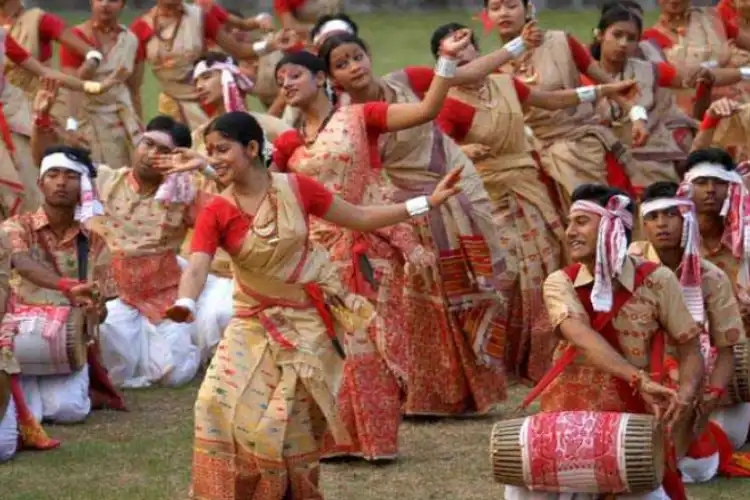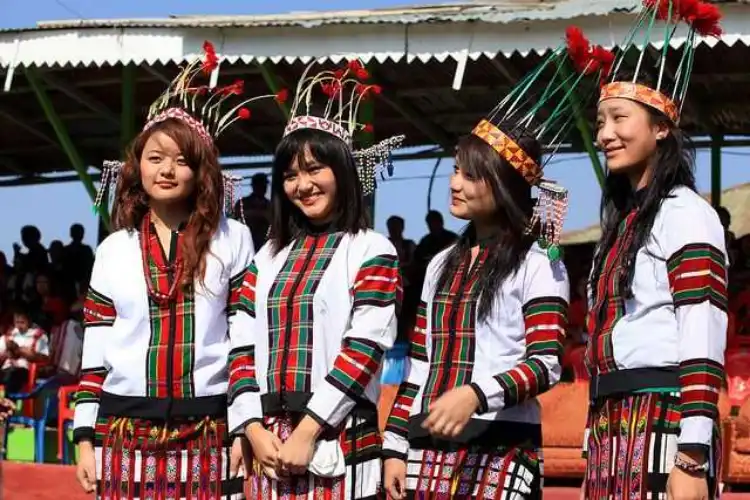
 Pallab Bhattacharyya
Pallab Bhattacharyya
The British annexed Assam in the year 1826 through the Treaty of Yandaboo. Thereafter, in a series of operations in 1875 Lotha Naga (1875), in Naga Hill (1886), in the Aao (1889), Sema Naga (1904), and in 1904 the Konyak Naga areas came under British domination. Between 1817 and 1889, Lushai Hills and later in 1912, the Naga Hill District comprising all these regions were annexed to Assam. Subsequently in 1912-13, NEFA was annexed to Assam. This entire landmass was incorporated into Assam by the British for administrative and financial convenience.
In the rest of India, there is a popular erroneous belief of considering entire North-East India as a homogeneous entity. This belief system, despite the varied cultural mosaic and divergent aspirations of the people inhabiting the region, has contributed to the misunderstanding of a myriad of problems cropping up in the region. This area is an interesting cultural mosaic of a variety of ethnic groups.
Sir Edward Gait in his book History of Assam (1905) mentioned: “Assam is in many ways a country of exceptional interest… In Assam…, although in the plains large section of the population…,are of mixed origin, there are also numerous tribes who are almost pure Mongolians, and the examination of their affinities, in respect of physique, language, religion and social customs, with other branches of the same family forms one of the most interesting lines inquiry open to Ethnologists.” This statement is an eloquent testimony to the diversity of the region.
The Ahoms under Saulung Sukapha set foot in Assam in the year 1228 and ruled for long 600 years by combining all the divergent groups under one umbrella which demonstrates their ability to unite all differences through a process of discussion and mingling with the culture of the country they were ruling. The Ahoms were descendants of the Thai Civilization which was as old as 2500 BC. Mingling of Thai culture for creation of Bor Asom (A Larger Assam) by bringing the seven kingdoms under one at the initiative of the Ahoms is a precedent that is difficult to trace in other areas of the world and is offers an idea for solution of intractable problems afflicting the region during the present days.
By creating a syncretic and inclusive culture through the adoption of local values and ethos and intermingling with Thai culture, the Ahoms created a tradition that is very much relevant in the present-day context. The Ahoms also gave predominant attention and encouragement to the barter system of exchange among various tribal communities. The Junbeel Mela which traces its origin to the 15th Century AD is an example of this and during the mela tribal Khasi, Jaintia, Lalung, Karbi, and Rabha people exchange their produces, and this inculcated friendliness among people living in different states in the NE region even today. Swargadeo Pratap Singha (1603-41) provided Khat (land) to the Naga Heads where people of different communities gathered and executed economic transactions in a very friendly environment. This people-to-people contact encouraged by Ahoms among the border populace is a lesson for the modern communities to resolve their differences. The historical perspective discussed above clearly demonstrates the success of unity amid diversity principle for any project at the frontiers.
mizoram culture pictures

Mizo girls in traditional dress
In course of time, the British Assam had been truncated into states of Nagaland, Mizoram, Meghalaya, and Arunachal Pradesh as per Article 2 and 3 of the Constitution to address the various aspirations of the communities but without any delineated border. This has led to violence in border areas of Assam and an assessment by Rights and Risk Analysis Group (RRAG) depict a very discouraging picture-since 1979 till 2021 as many as 157 people were killed and 361 injured and 65729 rendered homeless, the violence between Assam and Mizoram on 26th July leading to the death of 6 persons including 5 Assam Police personnel is the latest in the tally. These tragic incidents bring to our mind the infamous saying by the former US President Ronald Regan “A nation that cannot control its borders is not a nation”. Unfortunately, this daggers drawn attitude is displayed by all the states and this policy which is in vogue for over the last seven decades has not brought peace and amity in the region. Under these circumstances, it is strongly felt that a change in attitude by both the Centre and the States is the need of the hour.
Since the Union is primarily responsible for the creation of the states, the Centre has a major role in the peaceful resolution of the interstate border problem. Identification of the disputed areas among the States and freezing the population of both states residing in these areas through GPS mapping to prevent further encroachment, exploration by DONER Ministry for viable Projects in the Disputed areas like Agriculture and Tourism related, Agarwood Plantation, Pig Rearing, etc involving people from both the sides and recycling the profits among the communities inhabiting the areas are some of the steps suggested in this direction. The DONER Ministry should bear the cost incurred in these projects. For the success of these projects, people-to-people contact is the sine-qua-non. In Assam, there are organizations like AAAPTA (All Assam Agarwood Planters and Traders Association), NEPPFA (North East Progressive Pig Farmers Association), etc which have carried out commendable people-to-people contact initiatives involving people from neighbouring states.
The stakeholder States of this peaceful initiative suggested, should also identify such NGOs and DONER should handhold these organizations to make the projects a success. The economic involvement of the border population in such productive activities is certain to develop comradery and ACT East Policy will give a fillip to the endeavour. It is expected that this novel initiative is bound to reduce border escalations till their resolution through the judicial process in due course of time.
Drawing lessons from the path-breaking innovation of Ahom kingdom to resolve the issue of the border through people-to-people contact and cooperation is expected to bring to fruition the famous saying of former US President Barack Obama “We are defined not by our borders but by our bonds”.
(Writer is former Special DGP of Assam Police and former Chairman of Assam Public Service Commission)
ALSO READ: Assam's all religion library attracts youth
